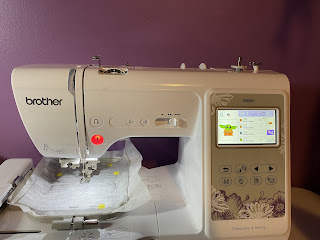This article is brought to you by Lizzsews
When I got my first machine, it was actually a sewing machine. I had an older machine because I wanted to see if I would like it or not. I instantly fell in love!
I had the same sewing machine for about three years before I started to sew more and realized that I couldn’t do everything that I wanted to do on that sewing machine because of its age. I started to do some research on sewing machines.
At this time, I also had started hand embroidering and loved the results, but not the amount of time that it took! Once I heard about embroidery machines, I knew that was what I wanted.
I researched sewing machines and embroidery machines, and that’s when I found the brother se600! I continued to look into the machine, and the more I looked into it, the more I loved it. I just knew that I would love machine embroidery and it was a huge sewing upgrade. But the best thing about the machine for me at the time was that it was affordable within my budget.
Recommended read: Brother se600 review
What’s your first embroidery or sewing machine story? Leave a comment to let me know, and don't forget to subscribe to get notified for my next blog post!

Comments
Post a Comment